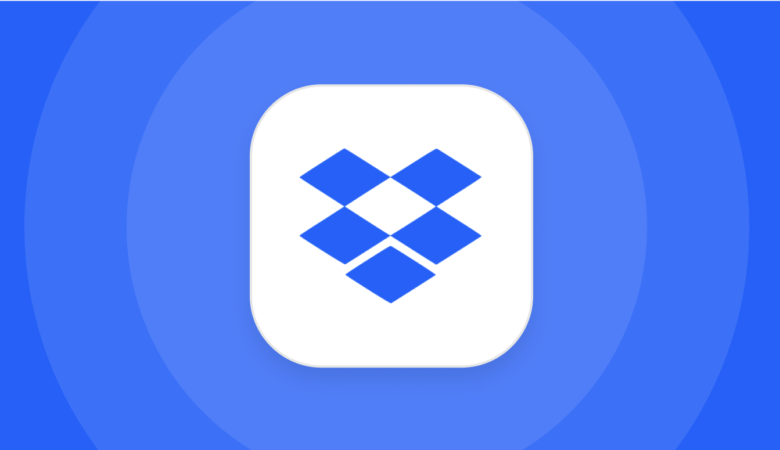In today’s fast-paced business landscape, effective project management is crucial for organizations of all sizes. With a plethora of project management tools available, choosing the right one can be a daunting task. Four popular contenders in this space are Trello, Asana, Monday.com, and ClickUp. In this comprehensive comparison, we will delve deep into each platform’s features, advantages, and disadvantages, helping you make an informed decision on the ideal project management tool for your needs.
Introduction: The Need for Efficient Project Management
Before we dive into the details of each tool, it’s essential to understand the importance of efficient project management in today’s business world. Regardless of the industry, size, or nature of your organization, effective project management can:
- Improve Efficiency: Streamline workflows, reduce bottlenecks, and enhance productivity.
- Enhance Collaboration: Foster teamwork and ensure all team members are on the same page.
- Increase Transparency: Provide visibility into project progress and milestones.
- Meet Deadlines: Help meet project deadlines and deliver results on time.
- Manage Resources: Optimize resource allocation and utilization.
- Minimize Errors: Reduce the risk of errors and costly mistakes.
To achieve these goals, selecting the right project management tool is paramount. Let’s now take an in-depth look at each of the four contenders: Trello, Asana, Monday.com, and ClickUp.
Trello: The Visual Kanban Board
Key Features:
- Kanban Boards: Trello is celebrated for its intuitive and visual Kanban-style boards, making task management a breeze.
- Cards: Each task is represented as a card on the board, providing space for detailed descriptions, due dates, attachments, and labels.
- Lists: Organize tasks into lists within boards, facilitating a clear workflow.
- Collaboration: Team members can collaborate by commenting on cards and attaching files.
- Integration: Trello offers integrations with various third-party apps and services, such as Slack, Google Drive, and more.
- Mobile Apps: Access Trello on the go with mobile apps.
Advantages:
- User-Friendly: Trello’s simplicity and visual approach make it easy for teams to get started quickly.
- Flexibility: The platform is highly adaptable, suitable for various use cases and industries.
- Ideal for Small Teams: Trello is particularly popular among smaller teams and individual users.
- Free Plan: It offers a free plan with paid options for additional features.
Disadvantages:
- Limited Advanced Features: While Trello excels in simplicity, it may lack the advanced features needed by larger organizations or complex projects.
- Less Suitable for Complex Workflows: Its straightforward design may not accommodate intricate workflows as effectively as other tools.
Ideal for: Trello is an excellent choice for small to medium-sized teams that prefer a visual, flexible, and straightforward approach to task management.
Asana: Precision in Task and Project Management
Key Features:
- Task Management: Asana provides task lists, boards, and timelines for efficient project and task management.
- Dependencies: Set task dependencies to ensure one task cannot start until another is completed.
- Gantt Charts: Asana includes Gantt chart views for visual project planning.
- Collaboration: Team members can comment on tasks, attach files, and communicate within the platform.
- Forms: Built-in forms streamline task requests.
- Integrations: It integrates with a wide range of applications and tools.
- Automation: Automate repetitive tasks with custom rules and triggers.
Advantages:
- Robust Task Management: Asana’s task and project management features are robust and suitable for teams of all sizes.
- Precise Project Planning: Task dependencies and Gantt charts enable precise project planning and execution.
- Customization: Asana allows for a high degree of customization with its advanced features and automation.
- Ideal for Large Organizations: It’s particularly popular among project managers and larger organizations.
Disadvantages:
- Learning Curve: Asana’s advanced features may require a learning curve for new users.
- Pricing: While it offers a free plan, advanced features are part of the paid tiers.
Ideal for: Asana is well-suited for larger organizations and project managers seeking precise project planning, task dependencies, and a wide range of customization options.
Monday.com: The Customizable Work Operating System
Key Features:
- Customizable Workflows: Monday.com allows teams to build custom workflows to match their unique processes.
- Visual Dashboards: Visual representations of project data provide insights and help track progress.
- Automation: Create automation recipes to streamline routine tasks.
- Integration: It integrates with popular apps, including Slack, Jira, and Dropbox.
- Templates: Monday.com offers templates for various use cases, such as project management, marketing, and sales.
- Communication: Team members can communicate within tasks and projects, reducing the need for external tools.
Advantages:
- Highly Customizable: Monday.com offers extensive customization options to adapt to your team’s workflows.
- Visual Data Representation: Visual dashboards make it easy to track project progress and performance.
- Automation: Automation helps streamline repetitive tasks and processes.
- Templates: Ready-made templates provide a quick starting point for various project types.
- Ideal for Creative Teams: Its flexibility makes it ideal for creative and marketing teams.
Disadvantages:
- Complexity: The high degree of customization and features can make it complex for new users.
- Pricing: While it offers a free trial, paid plans can be relatively expensive.
Ideal for: Monday.com is perfect for teams seeking a highly customizable project management solution with a strong focus on visual data representation.
ClickUp: The All-in-One Project Management Solution
Key Features:
- Multiple Views: ClickUp offers various views, including lists, boards, Gantt charts, and calendars, catering to different work styles.
- Custom Fields: Add custom fields to tasks to capture specific data.
- Automation: ClickUp provides automation options to reduce manual work.
- Goals: Set and track goals and objectives within the platform.
- Collaboration: Team members can collaborate with comments, document sharing, and more.
- Time Tracking: ClickUp offers built-in time tracking features.
- Integrations: It integrates with popular apps and tools.
Advantages:
- Versatility: ClickUp offers a wide range of features and views, making it versatile for various teams and workflows.
- Customization: Add custom fields, create custom statuses, and tailor ClickUp to your unique needs.
- Ideal for All Sizes: ClickUp is suitable for teams of all sizes and industries.
- Comprehensive Free Plan: It offers a comprehensive free plan with a robust feature set.
Disadvantages:
- Learning Curve: The extensive feature set may require time for new users to become proficient.
- Overwhelming for Simple Tasks: For small, straightforward projects, ClickUp’s feature richness may feel like overkill.
Ideal for: ClickUp is an all-in-one solution suitable for teams of all sizes and industries. It’s ideal for those looking for extensive customization options and a wide range of features.
Detailed Comparison
Now that we’ve explored the key features, advantages, and disadvantages of each tool, let’s dive deeper into a side-by-side comparison of these project management platforms.
Task Management
- Trello: Simple and visual task management with Kanban boards.
- Asana: Robust task management with task lists, boards, and timelines.
- Monday.com: Highly customizable workflows for task management.
- ClickUp: Versatile task management with various views, including lists, boards, and Gantt charts.
Collaboration and Communication
- Trello: Basic collaboration features, with comments and attachments.
- Asana: Strong collaboration with task-level communication and attachments.
- Monday.com: Effective communication within tasks and projects.
- ClickUp: Robust collaboration, including document sharing and comments.
Customization
- Trello: Limited customization options, focusing on simplicity.
- Asana: Moderate customization, suitable for most teams.
- Monday.com: Highly customizable to adapt to unique workflows.
- ClickUp: Extensive customization options, tailoring the tool to specific needs.
Automation
- Trello: Limited automation options.
- Asana: Offers automation rules and triggers.
- Monday.com: Provides automation recipes for streamlining tasks.
- ClickUp: Offers automation capabilities to reduce manual work.
Visual Data Representation
- Trello: Visual Kanban boards offer a simple way to represent tasks.
- Asana: Gantt charts and timelines provide visual project planning.
- Monday.com: Visual dashboards for tracking progress and performance.
- ClickUp: Multiple views, including Gantt charts and boards, offer visual representation.
Pricing
- Trello: Offers a free plan and paid options.
- Asana: Offers a free plan with paid tiers for advanced features.
- Monday.com: Offers a free trial and paid plans.
- ClickUp: Offers a comprehensive free plan and paid options.
Learning Curve
- Trello: Minimal learning curve due to its simplicity.
- Asana: Moderate learning curve for new users due to advanced features.
- Monday.com: Moderate learning curve due to extensive customization options.
- ClickUp: Moderate learning curve for new users due to feature richness.
Ideal User
- Trello: Small teams and individuals who prefer simplicity and visuals.
- Asana: Larger organizations, project managers, and teams requiring precise planning.
- Monday.com: Teams seeking high customization and visual data representation.
- ClickUp: Teams of all sizes and industries looking for extensive customization and features.
Conclusion: Choosing the Right Tool for Your Project
Selecting the ideal project management tool depends on your team’s specific needs, workflow, and preferences. Here’s a quick summary to help you make an informed decision:
- Trello: Simple and visual, perfect for small teams and individuals.
- Asana: Robust and precise, suitable for larger organizations and project managers.
- Monday.com: Highly customizable, ideal for creative teams and those seeking visual data representation.
- ClickUp: Versatile and comprehensive, great for teams of all sizes and industries.
Consider your project’s complexity, your team’s size, and your desired level of customization when making your choice. Each of these project management tools has its strengths, and the right one will empower your team to work efficiently and collaboratively.





Leave a Reply